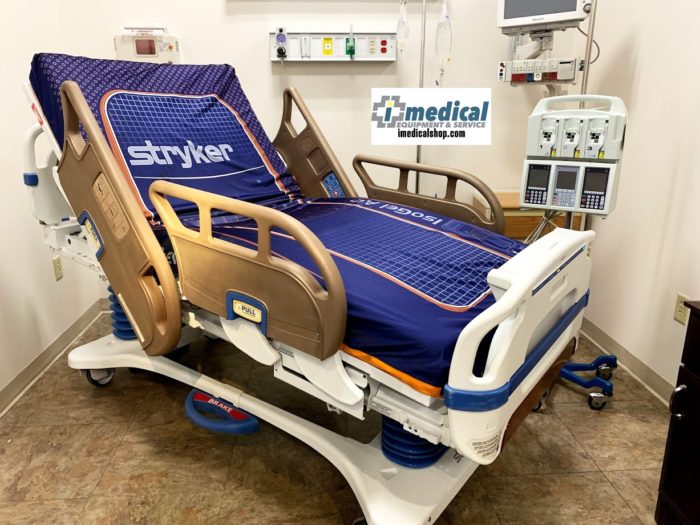Jul 30 2020
Putting Copper in Hospitals
 The evidence for this has been building over the last few years, and we are now at the point where it is reasonable to act on the evidence. Replacing wood, plastic, and stainless steel surfaces in hospitals with those either made of copper or embedded with copper significantly reduces bacteria and viruses (microbial burden, or MB) on those surfaces.
The evidence for this has been building over the last few years, and we are now at the point where it is reasonable to act on the evidence. Replacing wood, plastic, and stainless steel surfaces in hospitals with those either made of copper or embedded with copper significantly reduces bacteria and viruses (microbial burden, or MB) on those surfaces.
I am always suspicious of claims of ancient uses of healing methods, because there were many ancient cultures and collectively they pretty much did everything as a healing remedy. So the fact that we can cherry pick examples of some ancient society using copper to treat infections is not that impressive. They also used it for things for which it has no effect. But having said that, it was in fact used in wounds and to treat diseases in several ancient cultures. And copper does legitimately reduce the chance of infection.
It does this by leaching electrons from bacteria, which causes a charge to build up inside the cell which ultimately leads to free radical formation and cell death. Many studies have now shown that the microbial burden on copper surfaces is reduced by >80% compared to traditional surfaces. When used on frequently touched surfaces in hospitals, this can significantly reduce the amount of bacteria hanging around. Another study showed that the total reduction in bacteria from a copper alloy surface was 99.9% (compared to baseline, not to control surfaces). In controlled studies, copper surfaces work as advertised – they kill bacteria and viruses.
But does this actually reduce the incidence of hospital acquired infections (HAIs, also called health care associated infections)? The answer is yes. A 2017 systematic review of studies found that introducing copper surface in the hospital reduced HAIs by 25%. In this review there was no decrease in mortality, however. The authors concluded that more powerful studies were required to answer that question (about mortality). It may also be true that the infections copper prevents are ultimately treatable, and while they extend hospital stays and costs they do not often result in death. But it does seem likely, however, that increased HAIs should result in an increased mortality rate, so this does deserve further research.
This will require a significant investment by hospitals – replacing beds, serving trays, tables, rails, door handles, and other high-touch surfaces. But there is good reason to think this investment will be paid off. The estimated cost of the most common HAIs is around $10 billion per year in the US. This cost is often absorbed by the hospital. This is because reimbursement for hospital stays is often determined by DRGs – diagnostic related groups. Hospitals are paid by insurance companies based upon the patient’s diagnosis. If a patient is admitted for pneumonia, the hospital gets paid a fixed amount which represents the average cost of treating pneumonia. If the patient does well and is discharged quickly, the hospital makes money. If they do not do well and have complications and a prolonged stay, the hospital loses money. This provides a good financial incentive for hospitals to provide efficient and effective care, and minimize complications. There is also no incentive to deliver unnecessary hospital interventions.
So – by reducing HAIs a hospital will decrease their costs, costs which they are not compensated for because of the DRG system. Therefore, even if US hospitals spend $2.5 billion per year swapping out their equipment for ones coated with copper or some copper alloy, this will be a financially break-even move (assuming the 25% reduction in HAIs is accurate), and once they have made the switch they will start saving money every year.
Also, we can probably do better as the technology evolves. There are already companies who have figured out how to make copper embedded sheets, blankets, and hospital gowns. These are surprisingly soft and comfortable, and further reduce microbial burden. Once we learn how to optimally use copper we can hopefully maximize this benefit.
I do feel obligated to point out at this point that wearing copper bracelets or other jewelry is of no benefit. This is pseudoscience and has nothing to do with the legitimate antimicrobial properties of copper.
It seems like the scientific evidence is crossing a threshold, and attention is being paid to the advantages of copper because of the pandemic. I would not be surprised if within 5 years or so hospitals will be largely covered with copper, including copper cloth – anything that a patient might come into contact with. As someone who works in a hospital, I can also say that anything that reduces HAIs is incredibly welcome. Especially with antibiotic resistance, HAIs are an incredibly frustrating problem to deal with. And of course we all want to do what’s best for our patients, especially protecting them from any adverse events from the care we are delivering to them.






